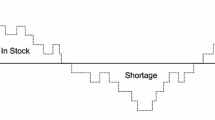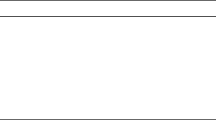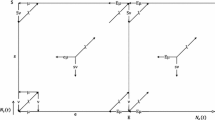Abstract
The contemporary after-sales market is of increasing importance. One of the features required by the market is to provide differentiated service levels to different groups of customers. We use critical levels as a means to offer differentiation. Critical level policies aim to exploit the differences in target service levels by inventory rationing. In our multi-item single-location spare parts inventory model, we aim to minimize the spare parts provisioning cost, that is inventory holding and transportation cost, under the condition that aggregate mean waiting time constraints for all customer groups are met. In a computational experiment and a case study with data from a company in the semiconductor supplier industry, we show that significant cost reductions can be obtained when critical level policies are used instead of base stock policies (ie policies without critical levels).



Similar content being viewed by others
References
Aberdeen Group (2005). The Service Parts Management Solution Selection Report, SPM Strategy and Technology Selection Handbook. Aberdeen Group: Boston, MA.
Barbour AD (1976). Networks of queues and the method of stages. Adv Appl Probab 8: 584–591.
Baskett F, Chandy KM, Muntz RR and Palacios FG (1975). Open, closed, and mixed networks of queues with different classes of customers. J Assoc Comput Mach 22: 248–260.
Cohen MA, Kleindorfer PR and Lee HL (1989). Near-optimal service constrained stocking policies for spare parts. Opns Res 37: 104–117.
Cohen MA, Kleindorfer PR and Lee HR (1992). Multi-item service constrained (s,S) policies for spare parts logistics systems. Naval Res Log 39: 561–577.
Dantzig GB and Wolfe P (1960). Decomposition principle for linear programs. Opns Res 8: 101–111.
Dekker R, Hill RM, Kleijn MJ and Teunter RH (2002). On the (S−1,S) lost sales inventory model with priority demand classes. Naval Res Log 49: 593–610.
Deloitte (2006). The Service Revolution in Global Manufacturing Industries. Deloitte Research: New York, USA.
Deshpande V, Cohen MA and Donohue K (2003). A threshold inventory rationing policy for service-differentiated demand classes. Mngt Sci 49: 683–703.
Gnedenko BV and Kovalenko IN (1968). Introduction to Queueing Theory. Israel Program for Scientific Translations, Jerusalem, Israel.
Kranenburg AA and van Houtum GJ (2007). Cost optimization in the (S−1,S) lost sales inventory model with multiple demand classes. Opns Res Lett 35 to appear.
Puterman ML (1994). Markov Decision Processes, Discrete Stochastic Dynamic Programming. Wiley Interscience: New York.
Wolff RW (1989). Stochastic Modeling and the Theory of Queues. Prentice-Hall International: London.
Author information
Authors and Affiliations
Corresponding author
Rights and permissions
About this article
Cite this article
Kranenburg, A., van Houtum, G. Service differentiation in spare parts inventory management. J Oper Res Soc 59, 946–955 (2008). https://doi.org/10.1057/palgrave.jors.2602414
Received:
Accepted:
Published:
Issue Date:
DOI: https://doi.org/10.1057/palgrave.jors.2602414




